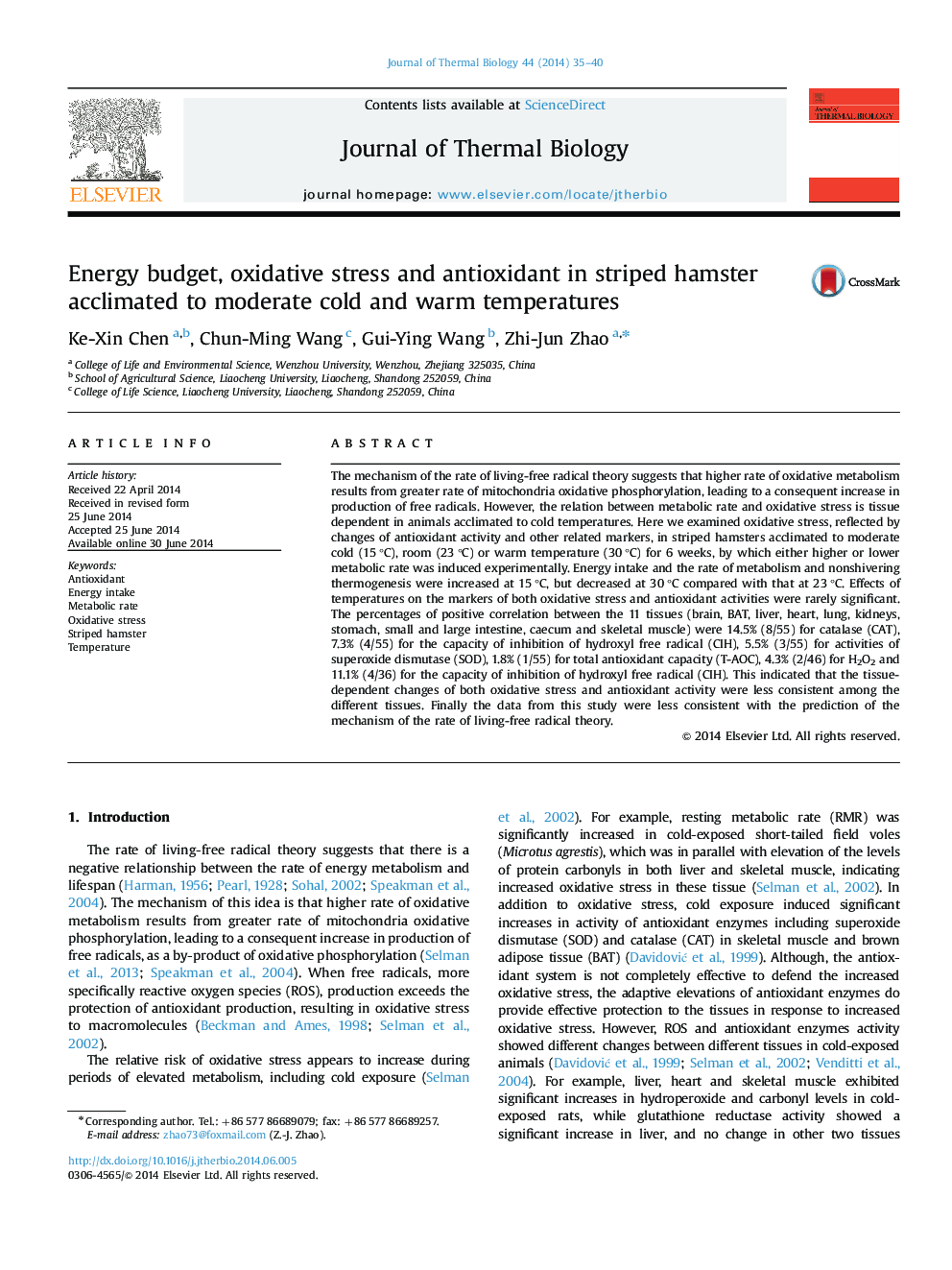| کد مقاله | کد نشریه | سال انتشار | مقاله انگلیسی | نسخه تمام متن |
|---|---|---|---|---|
| 2842905 | 1571101 | 2014 | 6 صفحه PDF | دانلود رایگان |
• Higher and lower rate of metabolism were induced in hamster at 15 and 30 °C.
• Several markers of oxidative stress and antioxidant activities were examined.
• Markers were different among the 11 tissues, and rarely affected by temperature.
• The tissue-dependent markers were less consistent among the different tissues.
• It was less consistent with mechanism of the rate of living-free radical theory.
The mechanism of the rate of living-free radical theory suggests that higher rate of oxidative metabolism results from greater rate of mitochondria oxidative phosphorylation, leading to a consequent increase in production of free radicals. However, the relation between metabolic rate and oxidative stress is tissue dependent in animals acclimated to cold temperatures. Here we examined oxidative stress, reflected by changes of antioxidant activity and other related markers, in striped hamsters acclimated to moderate cold (15 °C), room (23 °C) or warm temperature (30 °C) for 6 weeks, by which either higher or lower metabolic rate was induced experimentally. Energy intake and the rate of metabolism and nonshivering thermogenesis were increased at 15 °C, but decreased at 30 °C compared with that at 23 °C. Effects of temperatures on the markers of both oxidative stress and antioxidant activities were rarely significant. The percentages of positive correlation between the 11 tissues (brain, BAT, liver, heart, lung, kidneys, stomach, small and large intestine, caecum and skeletal muscle) were 14.5% (8/55) for catalase (CAT), 7.3% (4/55) for the capacity of inhibition of hydroxyl free radical (CIH), 5.5% (3/55) for activities of superoxide dismutase (SOD), 1.8% (1/55) for total antioxidant capacity (T-AOC), 4.3% (2/46) for H2O2 and 11.1% (4/36) for the capacity of inhibition of hydroxyl free radical (CIH). This indicated that the tissue-dependent changes of both oxidative stress and antioxidant activity were less consistent among the different tissues. Finally the data from this study were less consistent with the prediction of the mechanism of the rate of living-free radical theory.
Journal: Journal of Thermal Biology - Volume 44, August 2014, Pages 35–40
